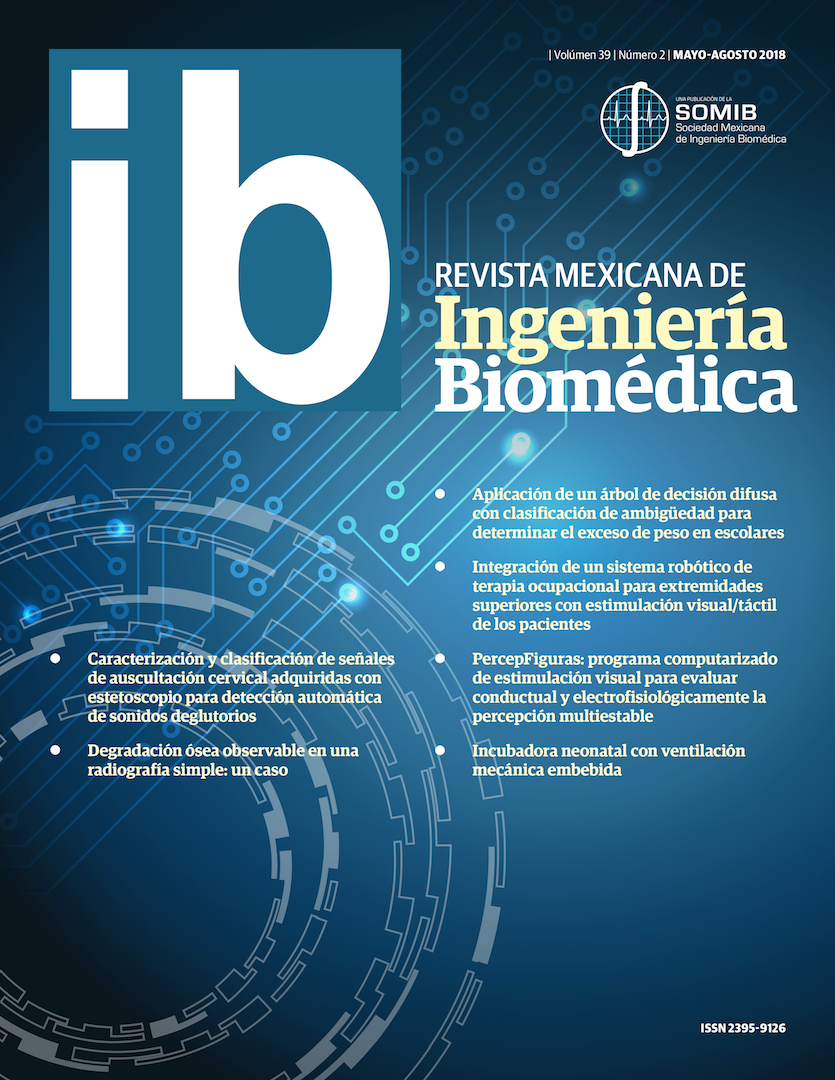Application of a fuzzy decision tree with ambiguity classification to determineexcess weight in schoolchildren
DOI:
https://doi.org/10.17488/RMIB.39.2.1Keywords:
fuzzy decision trees, vagueness, ambiguity, classification obesityAbstract
The decision tree technique in the health sciences serves to understand the correlations between the descriptions of patients and to classify accurately in various categories. The aim of the study was to analyze the accuracy of the classification of excess weight of schoolchildren through the application of a fuzzy decision tree, using a database of Itaupú, Paraná (Brazil). We used the database of a sample consisting of 5962 students (3024 female and 2938 male), with an age range between 6 to 17 years of age. The variables considered were weight, height and the Body Mass Index (BMI). To classify the anthropometric data of the students, a diffuse decision tree was used. The learning results showed a correct classification in the female sex of 2688 and in the male sex of 2471 records respectively. In relation to accuracy, 84% was determined in the male sex and 89% in the female sex. The Area under the curve showed higher values in the Fuzzy method and in both sexes (0.965-0.983), while in the classical method, they were lower (0.804-0.895). According to the calculated results it is possible to apply the fuzzy decision tree for the classification of overweight students with an acceptable accuracy, and it is presented as an alternative technique that can save time when analyzing the nutritional status, however, no other statistical calculations were made that have to do with the precision and accuracy through conventional statistical methods and compare with the techni-que of fuzzy trees.
Downloads
Downloads
Published
How to Cite
Issue
Section
License

This work is licensed under a Creative Commons Attribution-NonCommercial 4.0 International License.
Upon acceptance of an article in the RMIB, corresponding authors will be asked to fulfill and sign the copyright and the journal publishing agreement, which will allow the RMIB authorization to publish this document in any media without limitations and without any cost. Authors may reuse parts of the paper in other documents and reproduce part or all of it for their personal use as long as a bibliographic reference is made to the RMIB. However written permission of the Publisher is required for resale or distribution outside the corresponding author institution and for all other derivative works, including compilations and translations.








